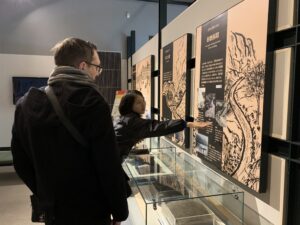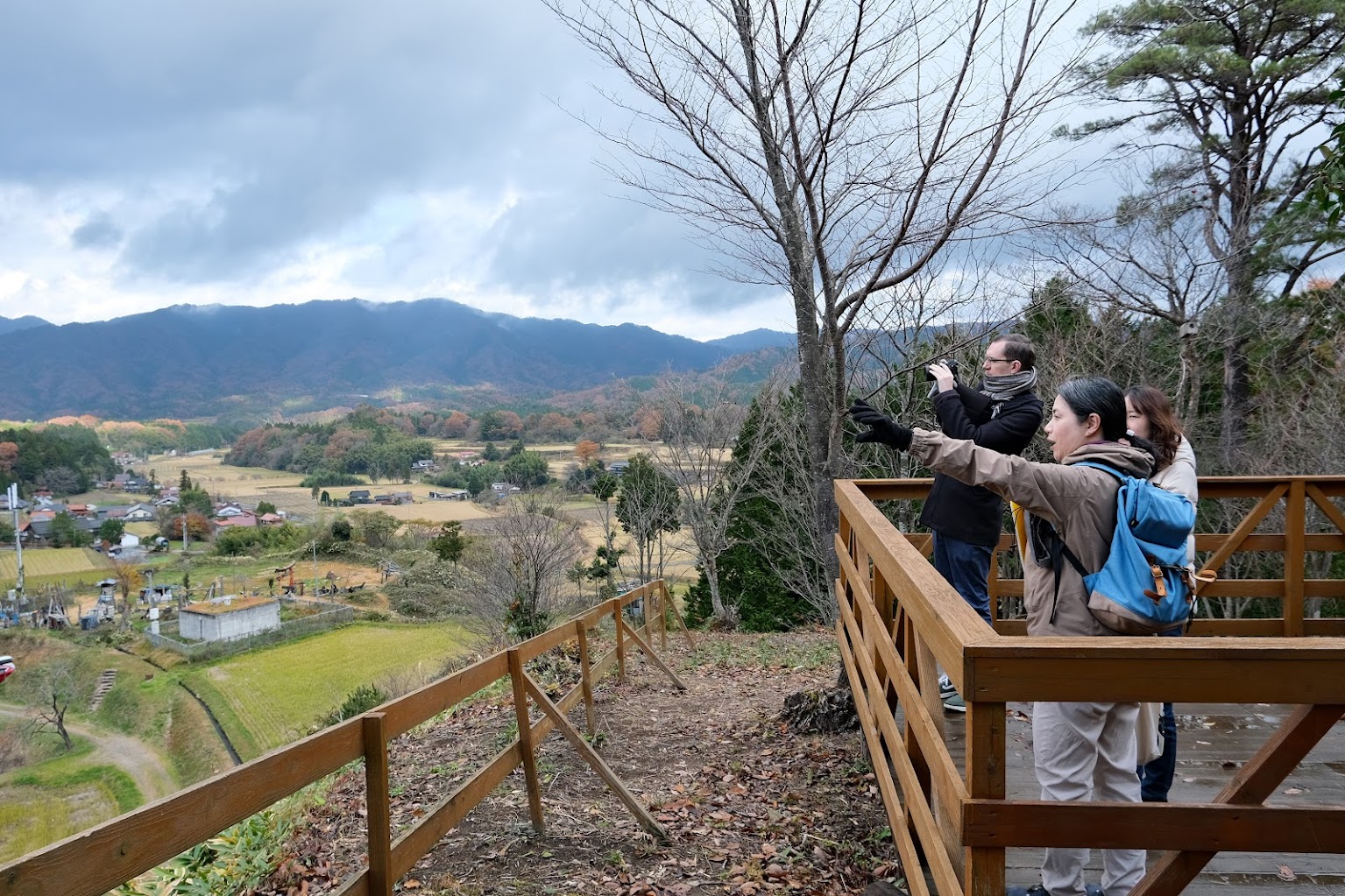Embark on a journey to explore Japanese mythology, nature worship, and traditional iron-making. Japanese myths are deeply intertwined with over a thousand years of culture and the daily lives of local communities. Remarkably, stories from this region alone constitute one-third of Japanese mythology. A journey through the Chūgoku Mountains reveals a tapestry of nature and mythology, offering a profound connection to Japan’s spiritual heritage.
This connection between nature and the divine was introduced to the Western world through the work of Basil Hall Chamberlain, a distinguished British Japanologist who extensively documented Japan between the late 19th and early 20th centuries. Chamberlain translated Japanese mythology—compiled in the 8th century, around the same time as England’s Historia ecclesiastica gentis Anglorum—into English, providing a gateway for Western audiences to understand Japan’s spiritual heritage.
In Japan, these deities, called kami, personify the hidden powers of nature, such as wind, rain, and thunder. This ancient animistic belief, known as kami worship, resonates deeply in the Chūgoku Mountains region. Areas such as Shōbara in Hiroshima Prefecture, along with Okuizumo and Izumo in Shimane Prefecture, preserve and celebrate this spiritual connection as a vital part of their cultural history.
Discovering the Charm of Nostalgic Japan
The drive through the Chūgoku Mountains is stunning, with each turn revealing more breathtaking views. Time seems to slow, and the landscapes whisper ancient tales, offering a truly immersive experience of Japan’s hidden beauty.
Day1: Sacred Terraced Rice Fields and Tranquil Shrines in Shōbara
The first day’s destination is Shōbara City, Hiroshima Prefecture. It takes over two hours by car from JR Hiroshima Station to Shōbara City, and even from Hiroshima Airport, it’s a one-hour drive. Shōbara is celebrated as one of Japan’s premier regions for terraced rice fields. While Japan is now renowned as an industrial nation, its essence lies in agriculture. Rice harvested from terraced fields is considered sacred, underscoring its importance in Japanese mythology. The rice-planting ceremony of the Imperial Family, which embodies these myths, is a significant ritual.
In Shōbara, the Hiba-Yama Kumano Shrine enshrines Izanami, a deity said to have created Japan and is considered an Imperial Family ancestor. The shrine is renowned for its tranquillity and its thousand-year-old cedar tree (with a trunk circumference of 8.1 metres), regarded as a spiritual hotspot by Japanese people. A spiritual hotspot is a place where the energy of nature is especially strong, creating a sacred atmosphere. Many people visit these spots to refresh their minds and bodies and recharge their energy. In Japan, Kami worship has deep roots. Mountains, water bodies, and forests are considered sacred, and gods are believed to reside in these places.

(Photo taken by TAVIKALA)
Culinary and Cultural Retreat
At night, you can stay at Chōjaya, a renovated kominka (traditional Japanese house) over 250 years old. This wooden one-story house, built using the traditional ishibadate construction method, offers a glimpse into the pre-modern lifestyle often depicted in folktales. The highlight of the stay is the cuisine prepared by one of Japan’s top chefs, Koji Mikawa, who creates exquisite game dishes using locally sourced vegetables and venison.
The culinary experience at Chōjaya is nothing short of extraordinary. Chef Mikawa is renowned for his innovative approach to traditional Japanese cuisine, seamlessly blending local ingredients with refined techniques. The menu boasts a variety of dishes that celebrate the seasonal bounty of the region, ensuring a dining experience that is both fresh and flavourful. You can relish the rich taste of venison, skilfully prepared to enhance its natural flavours, accompanied by an array of vegetables harvested from nearby farms. Each dish is a tribute to the local terroir, bringing the very essence of the region to the plate. Indeed, the phrase God is in the details rings true, as Chef Mikawa’s meticulous attention to every aspect of his creations exemplifies this philosophy.

(Photo taken by TAVIKALA)
In addition to game dishes, the chef offers a selection of seafood delicacies sourced from the Seto Inland Sea. Fresh fish, shellfish, and seaweed are transformed into beautifully crafted dishes that reflect the chef’s unwavering dedication to quality and authenticity. The dining experience is further elevated by the serene ambience of the renovated kominka, where you can savour their meals amidst the warmth of traditional wooden architecture.
Day 2: Myths and Iron-Making Heritage of Okuizumo
As you traverse the prefectural border, you arrive in Okuizumo Town, Shimane Prefecture, where you can spend your second day. According to Japanese mythology, Susanoo, a deity and descendant of Izanami, who was mentioned earlier, was banished from the heavens for his unruly behaviour. He descended to a landmark mountain named Mt. Sentsu. However, this mountain was home to a gigantic serpent, Yamata no Orochi, terrorising the locals by devouring a maiden each year. Desperate for assistance, an elderly couple implored Susanoo to slay the serpent. With remarkable bravery, Susanoo vanquished the monster, a legend passed down through the generations.
Furthermore, Okuizumo has been renowned for its tatara iron-making since ancient times. According to mythology, iron production was thriving in Okuizumo, and its quality was deemed suitable for agricultural tools. This was vividly depicted in Hayao Miyazaki’s celebrated anime film Princess Mononoke. The production of tamahagane, a type of iron ingot, reached its zenith during the Edo period. Craftsmen produced many Japanese swords, which were considered the soul of samurai warriors. These craftsmen played a pivotal role in supporting the Japanese samurai culture. Tamahagane laid the foundation for modern special steel technology, with Shimane’s special steel now supporting industries not only in Japan but worldwide.
One of the successors of this tradition is the Okuizumo blacksmith Unshu Yukimitsu. Since its establishment in 1834, the current fifth-generation owner, Kiyotoku Kusunoki, has provided meticulous guidance. Here, you can craft your original knife. Nowadays, instead of tamahagane, they utilise Yasuki Steel, which is even higher in quality and renowned globally, comprising 60% of the world’s razors. The iron, heated in a kiln at 1,300 degrees Celsius, is hammered into the shape of a blade. The finished knife is engraved with your name in kanji, making it a unique treasure for your family.
After completing the creation of your knife, be sure to visit the Okuizumo Tatara and Sword Museum. Here, you can learn in detail about the methods used to produce iron. A prominent English-speaking guide will explain through picture-story shows detailing Okuizumo’s mythology, tatara iron-making, and the local beliefs related to the gods. You may even have the opportunity to hold a real Japanese sword.

Feast of Flavours from Okuizumo
Culinary delights are essential for a great adventure, so be sure to savour the local speciality of Okuizumo, buckwheat noodles called Izumo Soba, for lunch at the restaurant Yukari Ann, which is adjacent to the renowned female worship Inata Shrine. This dish was presented to the Tokugawa Shogunate during the Edo period (1603-1868), a period in Japan overlapping with the Stuart, Georgian, and Victorian periods in England. Soba enthusiasts from all over Japan travel to the town just to enjoy the local food. Unlike typical soba noodles from Edo (Tokyo) or Shinshu (Nagano), which have a whitish appearance and lack stickiness, Izumo Soba is distinguished by its aroma, sweetness, stickiness, and blackish colour. These unique characteristics stem from a special milling technique that utilises buckwheat chaffs. The buckwheat grown in this region is a special variety, and the temperature differences between day and night in Okuizumo, Shimane, contribute to the rich flavours of Izumo Soba.
Traditionally, Izumo Soba is enjoyed either boiled or chilled. The chilled version is referred to as Warigo Soba in the prefecture. Warigo Soba is served in a three or five-tiered box, with each tier containing soba noodles topped with bonito flake, wasabi, green onion, shredded seaweed, and grated daikon radish mixed with chilli pepper. Soba aficionados from across Japan flock to Shimane to savour Izumo soba. Okuizumo Town is also renowned as the production area for Nita-Mai Rice, one of Japan’s highest-quality rice varieties. Agriculture in Okuizumo has long been sustainable, and Nita-Mai Rice symbolises the region’s harmonious coexistence with nature. This rice, nurtured by the abundant water and rich soil of the terraced fields, wins the hearts of both locals and visitors alike with its rich flavour. Make sure to enjoy it alongside the soba. Additionally, you can indulge in sweets made from nature’s blessings as souvenirs.
Journey Through Tea Ceremonies, Tatara Heritage, and Onsen Traditions
In tatara iron-making, there is a master craftsman known as a tesshi. The Itohara family has overseen iron-making as a supervisor in Okuizumo for generations. At the Itohara Memorial Museum, you can take a valuable opportunity to learn about Japanese and local culture through tea ceremony (Urasenke) lectures given by the current head amidst a beautiful Japanese garden encircled by mountains.

While the British might associate a cuppa with a warm mug of Earl Grey or Darjeeling sipped in a cosy corner, the Japanese tea ceremony offers a profoundly different experience. Here, every gesture, from whisking the matcha to presenting the tea bowl, embodies centuries of tradition and a philosophy of mindfulness. This unique perspective transforms a simple tea-drinking moment into a spiritual and cultural journey, inviting participants to reflect on harmony, respect, and tranquillity.

(photoes taken by TAVIKALA)
To relieve fatigue, you can unwind in Yumura Onsen at night, which boasts a 1300-year history. For dinner, you can relish a meal at the restaurant Tsukaru, where dishes centred around locally sourced organic vegetables are a highlight.
Day 3: Kami’s Sacred Realm and Sunset Over Land of Rising Sun
On the final day of the journey, you make your way to Izumo in Shimane Prefecture, the sacred land of Japanese mythology, which is the ultimate goal of this adventure. The Izumo Taisha Shrine enshrines Susanoo, who exterminated Yamata no Orochi, and his descendant, Okuninushi. Moreover, this is where the Izumo Taisha, Japan’s second-highest-ranked shrine (following the Ise Jingu Shrine), stands. The main hall of the grand shrine reaches 24 metres in height, surpassing the Parthenon in Greece and the Sphinx in Egypt. According to legend, it once stood at 48 metres. The centre of Kami worship draws numerous visitors from Japan and abroad, regardless of age or gender. In 2022, the British Guard Regiment, which protects Buckingham Palace, performed a dedication ceremony here to show respect to the deities of the Izumo Taisha.

For lunch, you can savour the legendary Uzuni cuisine at the nearby restaurant Kanunro from the Izumo Taisha. This dish was originally served by the chief priest of Izumo Taisha, whose status is like the Archbishop of Canterbury; during special ceremonies, the delicate flavours of Pufferfish, shiitake mushrooms, and dried goud strips are featured.

Additionally, behind Izumo Taisha stands the splendid Hinomisaki Shrine. Izumo is considered the holy land where the sun sets in the Land of the Rising Sun, Japan. It is said that Ise Jingu, which symbolises the land of the rising sun, and Hinomisaki Shrine, the land of the setting sun, jointly protect Japan as yin and yang. From Hinomisaki Shrine, you can further explore the tallest lighthouse in the East, Izumo Hinomisaki Lighthouse, and revel in the breathtaking ocean view of the Sea of Japan from the cape.

Enchanting Journey Through Japan’s Hidden Gems
As you traverse these enchanting landscapes, you’ll be immersed in stories of gods and heroes, and the meticulous craftsmanship passed down through generations. The Chūgoku Mountains are perfect for those exploring another facet of Japan beyond the well-trodden paths.
So, pack your bags and set out on this adventure woven by myth and traditional iron-making. Discover the magic and mystery that await in the heart of the Chūgoku Mountains, and let this journey be a testament to the enduring allure of Japan’s rich cultural heritage.
(This article is written in collaboration with TAVIKALA Co., Ltd)
For more details, don’t hesitate to contact the travel agency TAVIKALA Co., Ltd.

